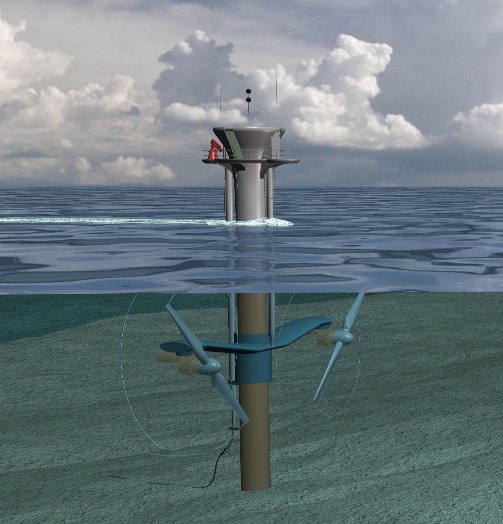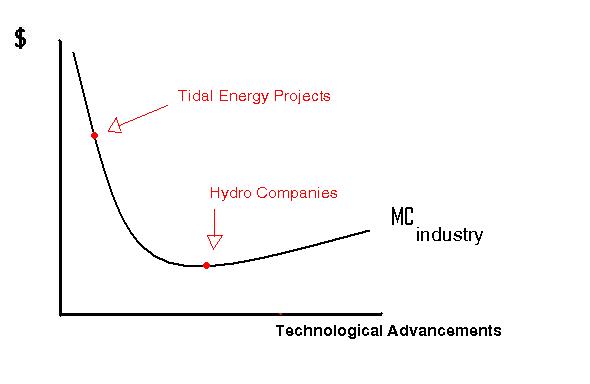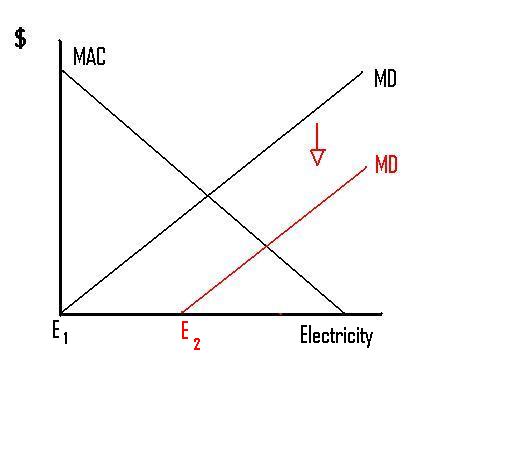Course:ECON371/UBCO2010WT1/GROUP8/Article7
Energy from the Ocean and Tides Starting To Look Promising
Summary
Over 45 new projects involving the extraction of wave and tidal energy are in the process of, or will soon be, tested in 2010 and 2011. This is a remarkable jump from only 12 projects in 2009. This indicates that the ocean power industry may become a significant player in the renewable energy sector. The UK currently leads the world in the ocean energy market, but Ireland, France, Portugal, South Korea, and Australia are developing similar projects as well. Tidal energy seems most promising in terms of feasibility as companies from the hydro power industry are starting to take interest in its potential. The three biggest turbine manufacturers in the world have entered the tidal sector, seeing it as an opportunity for growth. They are considered to be the catalysts to the development and subsequent commercialization of the industry; providing solutions in terms of technological requirements and bringing costs down. The offshore wind industry is also in the process of establishing itself in the tidal industry. The presence of large, established companies in combination with those employing emerging technologies provides the tidal energy sector with a unique opportunity to benefit from the experience of others while navigating previously uncharted waters.
Analysis
The newest technology and methods used for harnessing renewable energies remain underdeveloped. Although some are more mature than others, they are all still in their early years. They do the best with the technology that is currently available, and every new development pushes them further along the path to large-scale implementation. The process is slow, largely because the technology that supports these efforts is not exactly refined. The developers of these renewable energy extracting technologies are essentially learning as they go, without much precedence upon which to follow. For example, wind turbine technology may call upon the achievements in the field of aerospace, but the real challenge lies in translating these to meet their specific wind-harnessing needs.
The developers of technologies that harness tidal energy may be in a better position than most. Humans have been harnessing the energy of water displacement for many years, and the hydroelectric dams of modern times have benefitted from this profound cumulative experience. Better, more efficient turbine designs and various other structures or technologies in hydroelectric projects have been developed over time, and these come as a result of previous successes and failures. Although new findings and new developments are always emerging and re-shaping the technologies of the past, it is safe to say that hydroelectric systems are currently in a state of technological maturity. The newest methods of extracting renewable energy, by contrast, cannot call upon a lengthy history of development.
Tidal energy, however, is benefitting from the vast knowledge and experience of the hydroelectric sector, as large hydro companies are starting to enter the industry. The synergies that are present between these two industries will undoubtedly reveal themselves as essential in furthering the development of tidal energy extraction. Realizing the immense opportunity that lays before them, the three major hydro power turbine manufacturers are already currently involved in the tidal energy sector. Aside from their wealth of knowledge and capabilities, the economies of scale experienced by these companies basically negates any small-scale research and development projects by relatively minuscule companies hoping to gain a foothold in this sector. It is much more efficient to let the world's top turbine manufacturers explore how best to use existing technologies and develop new ones to harness this powerful resource.
The involvement of experienced companies who are familiar with the technology gives tidal energy the potential to become the leader in ocean energy extraction, and a serious contender in the renewable energy sector. Partnerships or joint ventures with the turbine manufacturers and these companies would be ideal. The less-experienced companies could refrain from investing in research and development of hydro technologies - an endeavour that is akin to "re-inventing the wheel" - and their costs would drop significantly. Assuming that smaller companies that have already made progress regarding the logistics of tidal energy production, these liberated funds could allow them to focus their resources on elements that are unfamiliar to the turbine manufacturers.
The involvement of the hydro power industry into tidal energy would even alleviate environmental damages in an indirect way. The shifting of resources from hydroelectric projects to tidal projects would accelerate what the free market would eventually do on its own. It is no secret that the environmental impacts of hydroelectric dams are massive: Flooding, the erosion of riverbanks, destruction of wildlife habitats, displacement of individuals, etc... In the long run, when tidal energy projects become feasible and economically beneficial, a higher proportion of resources would be dedicated to tidal energy instead of traditional hydroelectric projects. Less dams would need to be built to provide power, and the marginal damages function would shift downwards dramatically, as the provision of electricity is accompanied by much less environmental impacts. The difference between the E's in the graph below represents the electricity produced by the hugely less-damaging tidal energy project. The generation of electricity up to the point where the new MD function intersects the horizontal axis produces no (or very little) damages to the environment. The involvement of the hydro power industry would speed up development of tidal power, while simultaneously diminishing investment into the further development of damaging hydroelectric projects. Clearly, this present itself as another added benefit arising from "shifting tides".
Prof's Comments
Nice. I'm not quite sold on your graph of the two different technologies, tidal and hydro. Hydro is near the bottom for hydro power, but probably still a ways away when applied to tidal.


